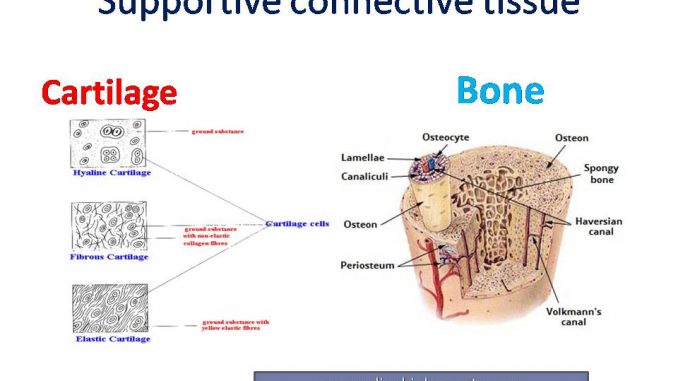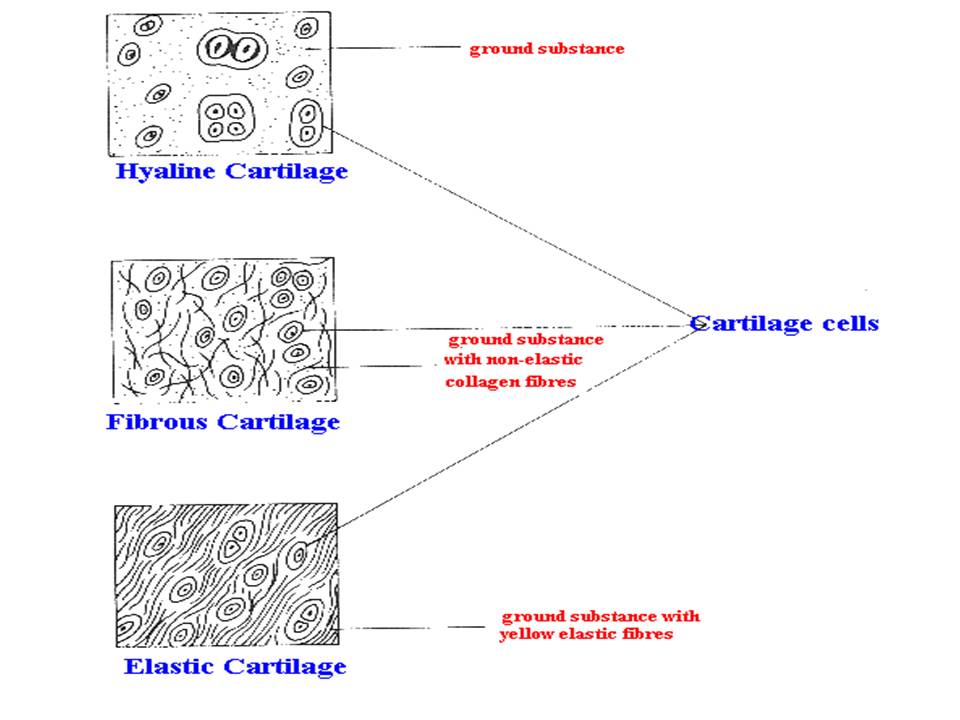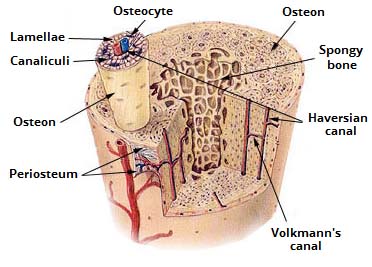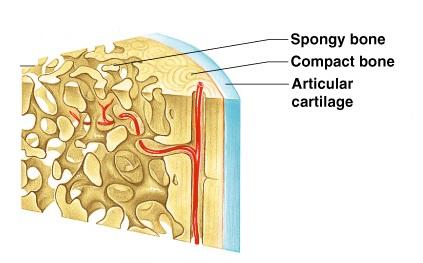
Supportive connective tissue: Cartilage and Bone
- They are supporting tissue, forms endoskeleton of vertebrates, protect vital organs
- types-
- Cartilage: Hyline cartilage, elastic cartilage and fibrous cartilage
- Bone: spongy bone and compact bone
1. Cartilage:
- It is tough, hard but a flexible connective tissue. It can resist strain and can absorb mechanical shock.
- It consists of solid or semisolid matrix in which cartilage cell (chondrocytes) and fibres are embedded.
Structure:
- cartilage is enclosed in a sheath of white fibrous connective tissue called Below the perichondrium, there is layer chondroblast cell, which form chondrocytes.
- Chondrocytes are dispersed in the matrix and occur in the fluid filled space called lacunae.
- Each lacunae contain 2-4 chondrocytes. Each chondrocytes is a large, angular cell with distinct nucleus.
- The matrix lacks the blood vessels.

types:
- Depending upon matrix, cartilage are of 3 types
i. Hyaline cartilage:
- The matrix is glass like semi transparent, homogenous and has fine collagen fibres
- It is slightly elastic and compressible.
- Found in- nose, larynx, trachea, ends of bone. It forms skeleton of cartilage fish
ii. Elastic cartilage:
- The matrix is semi opaque and has network of yellow elastic fibres
- It is highly elastic and flexible. The tissue recover the shape quickly
- Found in-external ear, epiglottis, and pharynx (Eustachian tube)
iii. Fibrous cartilage:
- The matrix has bundles of densely packed white collagen fibres
- It provides great strength and little degree of flexibility
- It acts as a shock absorber by giving a cushioning effect
- Found in- intervertebral discs and at pubis symphysis
2. Bone:
- It is supportive and protective tissue.
- The matrix is solid and calcified. (70% salts of calcium and phosphate: hydroxyapatite-Ca10(PO4)6(OH)2, 30 %fibrous protein; Ossein).
- Bone cell (Osteocyte) and collagen fibre are embedded in solid matrix
Structure:
- Each bone is enclosed in a layer of white fibrous connective tissue, called periosteum.
- Matrix is arranged in concentric circles called lamellae.
- Number of osteoblast cell and osteocytes are arranged in between the lamellae, in the fluid filed space called Lacunae.
- Each lacunae has fine cytoplasmic processes called canaliculi, which connect with other lacunae.
- Osteoblast are active bone cell, while osteocytes are inactive osteroblats
types:
i. Compact bone:

- Compact bone is arranged in concentric ring structures called osteons (Haversian canal system) in the center of each ring is a structure called a Haversian canal. This canal carries blood vessels through
the bone to nourish the cells embedded within the tissue. - Around the Haversian canal, rings of bone tissue are found called lamellae. Within these rings, are space called lacunae that contain osteocytes
- Radiating out from the lacunae are tiny channels that allow interaction of the cells with the blood supply,exchanges of nutrients, gases, called canaliculi.
- Canal of Volkman connects various Haversian canal systems together
- In the centre of compact bone, bone marrow cavity is present, filled with yellow bone marrow
ii. Spongy bone:

- The matrix is web like rather than solid with number of space in between.
- Also known as trabeculae
- Found in epiphysis of long bone
- It lacks Haversian canal system and Volkman canal
- It contains red bone marrow, which forms RBC and WBC.
